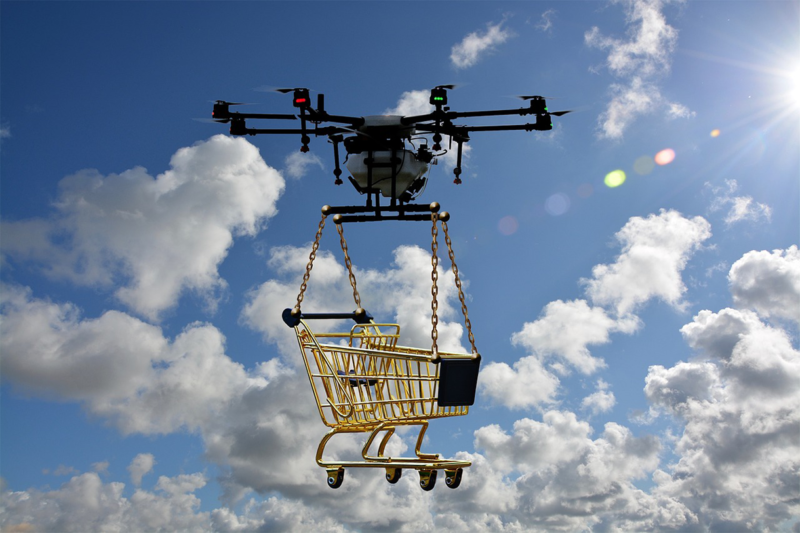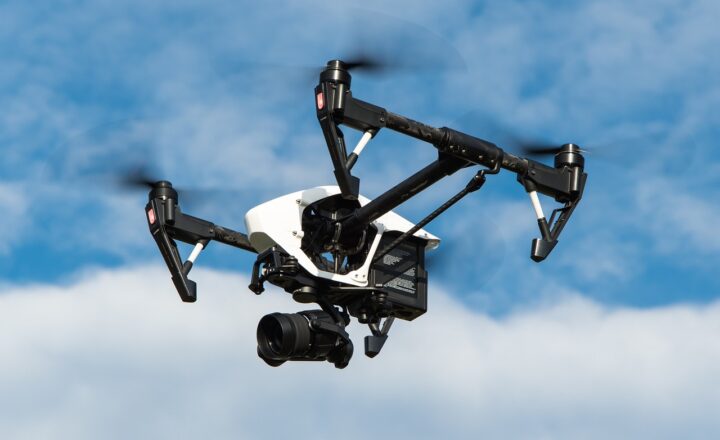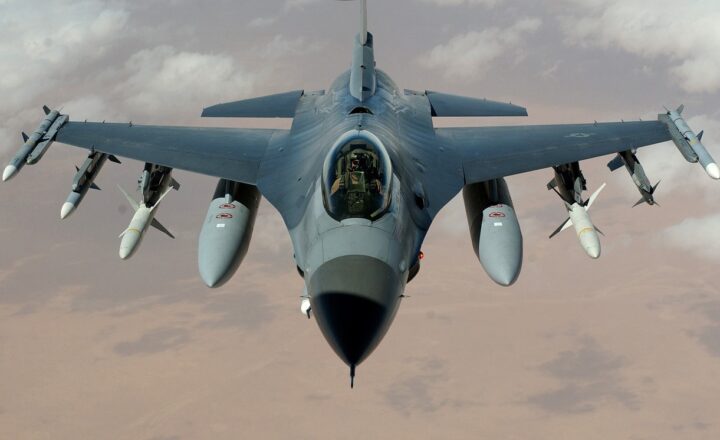
The world of delivery services is undergoing a dramatic transformation, driven by the rise of autonomous drones. These unmanned aerial vehicles (UAVs) are poised to revolutionize the logistics and transportation industry by offering faster, more efficient, and environmentally friendly ways to deliver goods. From retail packages and medical supplies to food deliveries, autonomous drones are not only changing the way products reach consumers but also paving the way for new possibilities in urban mobility and rural connectivity.
In this article, we’ll explore how autonomous drones are shaping the future of delivery services, the benefits and challenges they bring, and the impact they may have on industries and consumers alike.
1. The Rise of Autonomous Drones in Delivery Services
Autonomous drones, equipped with advanced sensors, navigation systems, and AI algorithms, are being developed and deployed by companies around the world to handle deliveries without human intervention. These drones are capable of flying autonomously, avoiding obstacles, and delivering packages to designated locations with pinpoint accuracy.
Key milestones in drone delivery:
- Amazon Prime Air: One of the most well-known examples of drone delivery is Amazon Prime Air, which aims to use drones to deliver packages in under 30 minutes. The service has undergone extensive testing and continues to make strides toward commercial deployment.
- Google’s Wing Aviation: Wing, a subsidiary of Google’s parent company Alphabet, became the first company to receive FAA approval for commercial drone deliveries in the U.S. Wing has conducted successful trials, delivering goods such as food, medicines, and household items in Australia and the U.S.
- UPS and Zipline: UPS, in partnership with Zipline, uses autonomous drones to deliver medical supplies and vaccines to remote areas in Rwanda and Ghana, showcasing the potential of drones to reach hard-to-access locations.
The rise of autonomous drones in delivery services signals a new era for the logistics industry, offering new ways to transport goods that are faster and more flexible than traditional methods.
2. Benefits of Drone Delivery Services
Autonomous drone deliveries offer numerous advantages over traditional delivery methods. These benefits have the potential to reshape the logistics industry and enhance the customer experience.
Key benefits of drone delivery:
- Speed and Efficiency: Drones can significantly reduce delivery times, especially for short distances and urgent deliveries. Unlike trucks and delivery vans, drones can bypass traffic and fly directly to the destination, providing near-instant delivery for certain items.
- Cost Reduction: Autonomous drones eliminate the need for human drivers, reducing labor costs. Additionally, drones are typically cheaper to operate than trucks or cars, especially for last-mile deliveries, which account for a significant portion of total delivery costs.
- Environmental Sustainability: Drones are typically powered by electricity, making them a greener alternative to gas-powered delivery vehicles. By reducing the number of delivery trucks on the road, drones can help lower carbon emissions and alleviate urban congestion.
- Accessibility to Remote Areas: Drones can reach remote or hard-to-access locations, such as rural areas, islands, or disaster-stricken regions, where traditional vehicles may struggle to navigate.
By improving delivery times, reducing costs, and lowering the environmental impact of logistics, autonomous drones are set to bring significant improvements to the delivery industry.
3. Applications of Drone Delivery Across Industries
The potential applications of autonomous drones in delivery services extend beyond traditional e-commerce. Various industries are exploring how drones can enhance their operations and deliver critical goods more efficiently.
Key industries using drone delivery:
- Healthcare: Drones are being used to deliver medical supplies, vaccines, and blood to hospitals and clinics, especially in rural and remote areas. For example, Zipline’s drones have been crucial in delivering life-saving medical supplies in Africa.
- Retail and E-commerce: Companies like Amazon, Walmart, and Alibaba are developing drone delivery systems to deliver online orders to customers faster and more efficiently, particularly for last-mile deliveries.
- Food Delivery: Restaurants and food delivery platforms are experimenting with drones to deliver meals in congested urban areas. Drones can provide faster food delivery, ensuring that meals arrive hot and fresh.
- Disaster Relief: In the aftermath of natural disasters, drones can be deployed to deliver emergency supplies, food, and water to affected areas that are difficult to access due to damaged infrastructure.
Autonomous drones have the potential to revolutionize industries that rely on fast, reliable, and cost-effective delivery solutions, offering new opportunities for innovation and growth.
4. Challenges Facing Drone Delivery Services
While the potential of autonomous drones in delivery services is undeniable, several challenges remain that must be addressed before drone deliveries become widespread.
Key challenges in drone delivery:
- Regulatory Hurdles: Drones must comply with aviation regulations, which vary by country. In the U.S., for example, the Federal Aviation Administration (FAA) has strict guidelines for commercial drone operations, including restrictions on flying beyond visual line of sight (BVLOS) and over populated areas.
- Safety and Security: Ensuring the safety of drone operations is a critical concern. Drones must avoid obstacles, birds, and other aircraft while flying, and they must land safely in areas with people. Cybersecurity is also a concern, as drones could be vulnerable to hacking or interference.
- Public Acceptance: Drones flying over residential areas raise concerns about privacy, noise, and the potential for accidents. Gaining public trust and acceptance will be essential for widespread adoption of drone delivery services.
- Weather Conditions: Drones are sensitive to adverse weather conditions, such as high winds, heavy rain, and snow, which can affect their ability to operate safely. Developing drones that can function reliably in all weather conditions will be key to their long-term success.
Addressing these challenges will be crucial for the successful integration of autonomous drones into mainstream delivery networks.
5. The Future of Autonomous Drone Delivery
As technology continues to advance, the future of autonomous drone delivery looks promising. Innovations in AI, robotics, and battery technology are making drones more efficient, reliable, and capable of handling larger payloads over longer distances.
Trends shaping the future of drone delivery:
- Drone Hubs and Urban Infrastructure: To support large-scale drone deliveries, urban areas may develop dedicated drone hubs and landing zones where drones can pick up and drop off packages. These hubs could be integrated into existing logistics networks, streamlining last-mile delivery.
- Hybrid Delivery Models: Some companies are exploring hybrid delivery models that combine drones with traditional delivery vehicles. For example, delivery trucks could serve as mobile drone launchpads, allowing drones to complete the last mile of delivery while the truck covers longer distances.
- Increased Payload Capacity: Advances in drone technology are enabling drones to carry heavier loads, expanding their potential uses. Larger drones may one day deliver furniture, appliances, or even small vehicles.
- AI and Autonomous Navigation: Continued improvements in AI and machine learning will make drones smarter and more autonomous. These advancements will allow drones to navigate complex environments, avoid obstacles, and make real-time decisions with minimal human intervention.
With these innovations on the horizon, autonomous drones are set to play an increasingly important role in the future of logistics and transportation.
Conclusion: Drones Taking Delivery to New Heights
Autonomous drones are revolutionizing the delivery industry by offering faster, more efficient, and environmentally friendly solutions for transporting goods. While there are challenges to overcome, such as regulatory hurdles and safety concerns, the potential benefits of drone delivery are enormous. From improving last-mile logistics to delivering life-saving medical supplies in remote areas, drones are reshaping how products move around the world.
As drone technology continues to evolve, we can expect to see even greater integration of autonomous drones into our daily lives, transforming the future of delivery services and making the world more connected than ever before.








